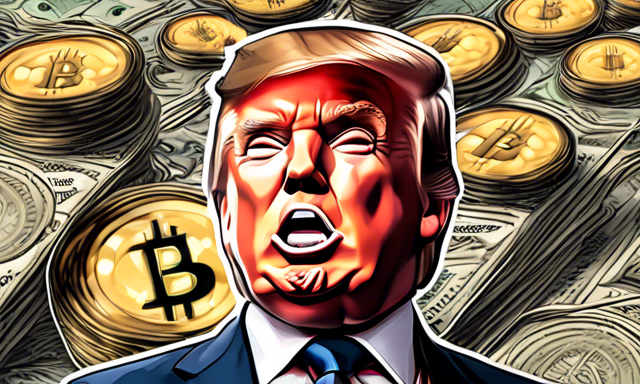Addressing the National Debt with Bitcoin
Former President Donald Trump recently suggested using Bitcoin or a “crypto check” to tackle the United States’ massive $35 trillion national debt. During an interview, Trump lauded the crypto industry and emphasized the need for America to innovate in the digital asset space to keep up with other nations. He even proposed the idea of utilizing Bitcoin to alleviate the national debt crisis by providing individuals with cryptocurrency payments to offset the debt burden.
The Mounting Debt Issue
The US government is currently grappling with significant challenges stemming from its mounting debt levels. The continuous devaluation of the dollar, driven by extensive currency printing to address outstanding debts, has contributed to the increasing value of Bitcoin when compared to fiat currency. To highlight the severity of the situation, it took approximately 200 years for the US national debt to reach $1 trillion. However, now, the debt increases by the same amount every three months due to deficit spending.
- The devaluation of the dollar due to excessive currency printing
- The rapid increase in the US national debt
- The impact of deficit spending on the debt
Bitcoin as a Potential Solution
Bitcoin’s capped supply nature could potentially divert value away from the current US dollar system, thereby preventing a total collapse of the currency similar to historical events like the Weimar Republic’s experience in the early 20th century. This potential value transfer to Bitcoin could play a crucial role in stabilizing the financial landscape and mitigating the risks associated with excessive monetary printing and debt accumulation.
Proposed Bitcoin Strategic Reserve
Senator Cynthia Lummis has introduced a bill advocating for the establishment of a Bitcoin strategic reserve within the United States. This initiative aims to counteract the negative repercussions of extensive money printing and uphold the US’s financial supremacy in global markets and trade. The proposal suggests that the US Treasury acquire 5% of Bitcoin’s total supply and retain the decentralized asset for a minimum of 20 years to serve as a hedge against monetary devaluation caused by the Federal Reserve’s policies and inadequate fiscal strategies.
- The introduction of a bill by Senator Cynthia Lummis
- The purpose of establishing a Bitcoin strategic reserve
- The plan to acquire 5% of Bitcoin’s total supply
Evolution of Trump’s Crypto Stance
Former President Trump’s perspective on cryptocurrencies has changed over time. Despite previously labeling Bitcoin as a “scam,” he has recently shifted his position. Trump now vows to end the Biden administration’s perceived hostility towards crypto if re-elected as president. Additionally, he has criticized President Biden for his tough stance on cryptocurrencies, emphasizing the importance of the US becoming a prominent player in the crypto industry.
Public Perception and Political Influence
Surveys indicate that a significant portion of US voters consider a candidate’s stance on cryptocurrencies before casting their vote, underscoring the growing influence of digital assets in the political arena. Furthermore, a poll conducted by a top crypto venture capital firm indicates substantial support for Trump among the crypto community for the upcoming 2024 US Presidential Election, reflecting the industry’s impact on political preferences.
- The influence of public opinion on political candidates
- The role of cryptocurrency in shaping voter decisions
- The crypto community’s support for Trump in the 2024 US Presidential Election
Hot Take: Embracing Cryptocurrency for Financial Innovation
Incorporating cryptocurrencies like Bitcoin as potential solutions to address complex financial challenges, including the national debt, showcases a paradigm shift towards innovative financial strategies. The intersection of digital assets and traditional fiscal policies represents a unique opportunity for governments to navigate economic hurdles and leverage emerging technologies for sustainable financial growth.





 By
By
 By
By
 By
By
 By
By

 By
By